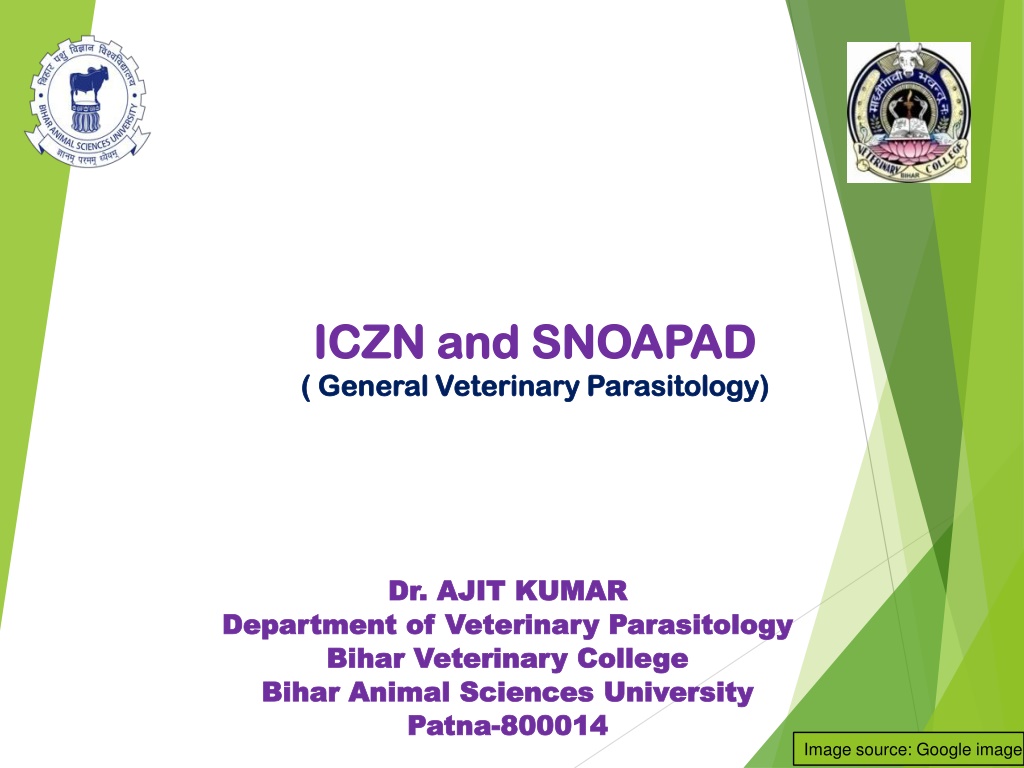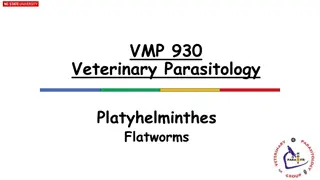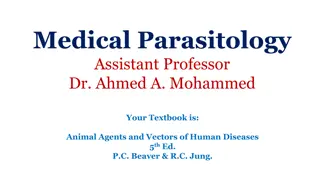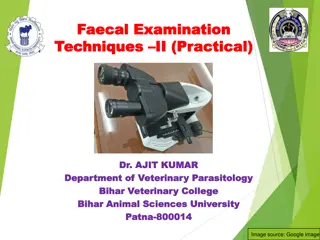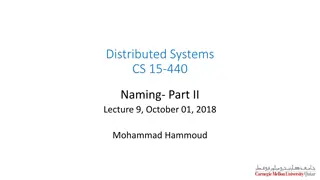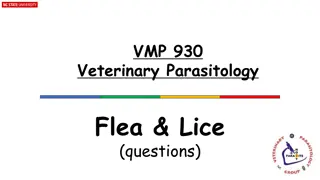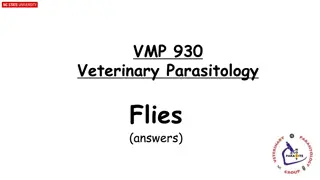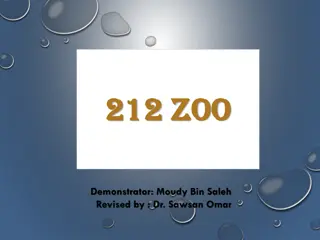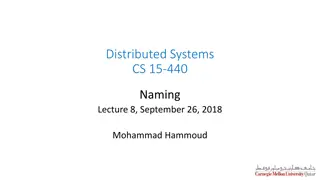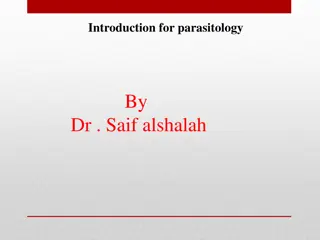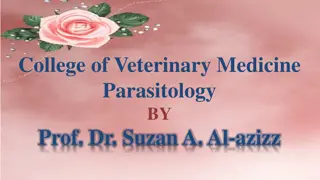Understanding Naming Rules in Veterinary Parasitology
Explore the essential rules and regulations defined by the International Code for Zoological Nomenclature (ICZN) in the field of General Veterinary Parasitology. Learn about the nomenclature of parasites, scientific naming conventions for genera and species, and the classification of parasites in the context of zoological taxonomy.
Download Presentation

Please find below an Image/Link to download the presentation.
The content on the website is provided AS IS for your information and personal use only. It may not be sold, licensed, or shared on other websites without obtaining consent from the author. Download presentation by click this link. If you encounter any issues during the download, it is possible that the publisher has removed the file from their server.
E N D
Presentation Transcript
Bihar Animal Sciences University | ICZN and SNOAPAD ICZN and SNOAPAD ( General Veterinary Parasitology) ( General Veterinary Parasitology) Dr. AJIT KUMAR Dr. AJIT KUMAR Department of Veterinary Parasitology Department of Veterinary Parasitology Bihar Veterinary College Bihar Veterinary College Bihar Animal Sciences University Bihar Animal Sciences University Patna Patna- -800014 800014 Image source: Google image
ICZN ICZN Image source: Google image
Nomenclature of Parasites Nomenclature of Parasites Several thousand of organism in the word. Several names for same organism and same name organisms. Carolus Linnaeus in the year 1758 given Bionomial nomenclature in his book Systema Nature . Later, International Code for Zoological Nomenclature ( ICZN) is establish in 1904 to formed rules for naming species and for indicating their relationship. for different Image source: Google image
Rules and Regulation of ICZN for Naming Parasites The name of the genus of any parasite is uninomial, the species is binomial and the subspecies is trinomial. Scientific names are derived from Latin or Greek word. e.g. Sarcocystis ( Cyst forming in the muscle of infected host) : derived from Greek word Sarkos means flesh and Kystis means cyst. The names of the genus and species or subspecies are expressed (printed) in italics or when written are underlined. Trypanosoma evansi Printed Written
Rules and Regulation of ICZN for Naming Parasites Author of a scientific name of an animal is that who first publishes it. If it is desired to cite the author s name it follows the scientific name. This may be followed, separated by a comma, by the yea in which the name was first published. Taenia Linnaeus, 1758 Written Written
Rules and Regulation of ICZN for Naming Parasites Classification Classification of of Parasites Parasites : : - - Any Any parasites parasites will will be be placed placed under follows follows rules rules and and regulations regulations of of International Nomenclature Nomenclature (ICZN) (ICZN) - - under the the taxonomy taxonomy which Code of of zoological which International Code zoological Classification tree Classification tree- - Kingdom Kingdom Subkingdom Subkingdom Phylum Phylum Subphylum Subphylum Class Class Subclass Subclass Order Order Suborder Suborder Superfamily Superfamily Family Family Subfamily Subfamily Genus Genus Subgenus Subgenus Species Species subspecies subspecies
Naming of Taxa with Example The naming of different classification units ( The naming of different classification units (Taxa definite pattern definite pattern - - Classification Unit (Taxa) Suffix to be added in naming Taxa) follows a ) follows a Example Class -ea Sporozoea Subclass -ia Coccidia Order -ida Eucoccidiida Suborder -ina Eimeriina Superfamily -oidea Ancylostomatoidea Family -idae Sarcocystidae subfamily -inae Sarcocystinae
Classification of Sarcocystis Parasite Kingdom Animalia Subkingdom Protozoa Phylum Apicomplexa Subphylum Sarcodina Class Sporozoea Subclass Coccidia Order Eucoccidiida Suborder Eimeriina Family Sarcocystidae subfamily Sarcocystinae Genus Sarcocystis Species cruzi
SNOAPAD SNOAPAD Image source: Google image
SNOAPAD World Association for the Advancement of Veterinary Parasitology formulate a guideline to uniform and proper terminology to denominate the animal parasitic disease or infections. (WAAVP) Guidelines was published in 1988 as the Standardised Nomenclature of Animal Parasitic Disease ( SNOAPAD). Later, the word Animal was dropped and the SNOAPAD is SNOPAD to denote diseases. changed all to parasitic Image source: Google image
SNOAPAD Guideline of SNOPAD is as follows The suffix osis osis (plural= (plural= oses to the stem of the names of the parasite taxon by the omission of the last one or two letters- oses) ) is to be added Taxonomic name of Taxonomic name of parasite parasite Addition of suffix Addition of suffix Disease name Disease name Trypanosoma Fasciola Trypanosom + osis Fasciola +osis Trypanosomosis Fasciolosis By adding osis in the genitive name where taxa end with x in the nominative . Genitive Genitive name of parasite of parasite name Nominative name Nominative name of parasite of parasite Addition Addition of suffix suffix of Disease Name Disease Name Demodex Demodicis Demodic +osis Demodicosis Pulex Pulicis Pulic +osis Pulicosis
SNOAPAD Guideline of SNOPAD is as follows By adding osis in the full generic name of the parasite. Parasite Parasite Hepatozoon Hepatozoon+ osis Generic Name of Generic Name of Addition of Suffix Addition of Suffix Disease Name Disease Name Hepatozoonosis Well established disease names which are not formed from the taxonomic name of the parasite can also be used as alternatives to the related terms offered by SNOAPAD . e.g. Malaria, surra, scabies, myiasis, echinoccosis etc.
SNOAPAD Guideline of SNOPAD is as follows By adding osis in the full generic name of the parasite. Parasite Parasite Hepatozoon Hepatozoon+ osis Generic Name of Generic Name of Addition of Suffix Addition of Suffix Disease Name Disease Name N N o o t t A A c c c c e e p p t t e e d d Hepatozoonosis Any parasitic infection which may or may not produce clinical signs in a host called parasitosis parasitosis. e.g. Trypanosomosis, Haemonchosis, Babesiosis etc. Parasitiasis Parasitiasis
